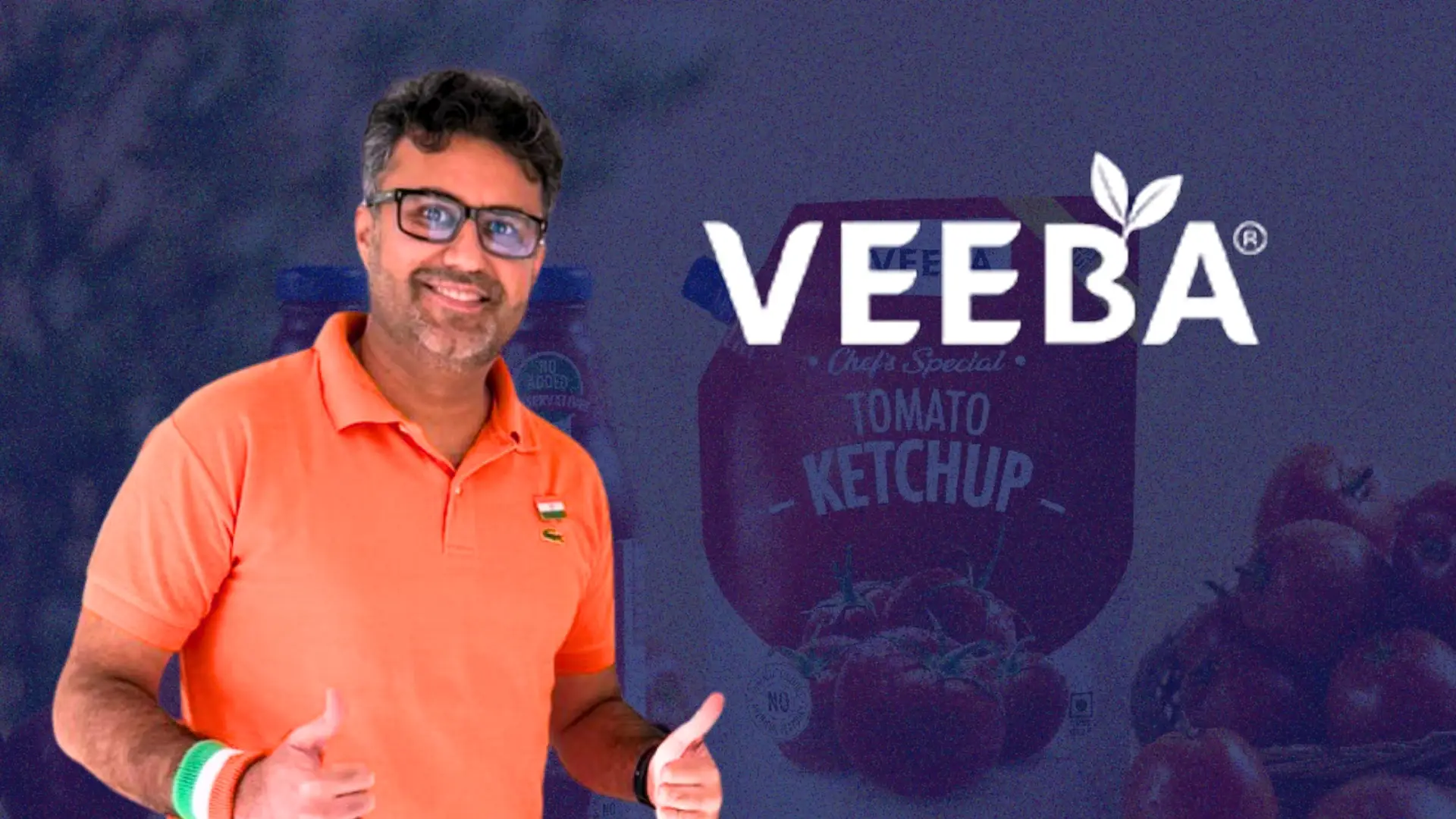How often do you eat out? Well, not just in restaurants but at outlets. Now, whatever you eat in terms of Chinese or Western food, you will get a sauce packet with the food that you order. I guess most of you love spilling sauce on the food that you ordered, right? But let me ask you a question: do you eat sauce a lot? Who makes those sauce packets? Who’s behind that small sachet that adds big flavor to your food?
Well, there are many players, but what you see in most of the places is the company that we are discussing in this article. You might assume it’s some big multinational brand. But surprisingly, the company behind most of those packets is a homegrown Indian brand, one that’s quietly built an empire worth hundreds of crores without shouting its name.
We’re talking about Veeba Foods, the silent force flavouring India’s modern food scene. Most of us are already Veeba’s customers; we just didn’t know it.
The story of Veeba begins with Viraj Bahl, the founder, in the year 2013. He is a second-generation entrepreneur who had already seen the food industry from the inside long before he started his own company.
Before Veeba, his family ran a successful business called Fun Foods, one of the first Indian companies to make mayonnaise, salad dressings, and other Western sauces. The brand was later sold to the German food giant Dr. Oetker in 2008.
Even after that acquisition, he continued to work with Dr. Oetker for a few years, and that’s where he observed some important things. He observed India’s growing appetite for international flavors and the massive gap between restaurant-quality products and what consumers had access to at home.
In 2013, he founded Veeba Foods Pvt Ltd and started supplying sauces, dressings, and condiments to B2B clients such as McDonald’s, KFC, Subway, Domino’s, and Starbucks. That’s the perfect and smart move, as they got the validation. Now B2B gave them stability, validation, and scale. Veeba’s products were literally being tasted by millions of Indians, just not under its own name. Each burger, wrap, and pasta served at those outlets carried the Veeba touch.
So, they earned that scale in the initial years themselves, but the biggest problem with B2B is lesser margins. In the year 2016, they took a different approach along with B2B. Viraj wanted to go further. He wanted Veeba to move from restaurant kitchens to home kitchens. That’s when the real game started for Veeba Foods.
But what most of us know is sauces, but their mayonnaise has dominated the markets. If there’s one product that symbolizes Veeba’s creativity, it’s their mayonnaise. When Veeba entered retail, mayonnaise in India was still seen as a niche product used occasionally and largely imported or expensive. Veeba changed that perception completely. They democratized mayo.
Starting with classic mayonnaise, Veeba quickly expanded into innovative versions like Garlic Mayo, Tandoori Mayo, Eggless Mayo, and Low-Fat Mayo, each tailored for India’s diverse consumer base. And they didn’t stop just with Mayo or restrict themselves to one particular product. From the familiar Tomato Ketchup to international favourites like Southwest Chipotle, Caesar Dressing, Thousand Island, Schezwan Sauce, and Thai Sweet Chili, Veeba created a product for every palate and purpose.
One of the under covered factors for their success is their small sachets. Veeba’s small packets helped them to get into almost every retail outlet. Now it is priced too low, and people get it with the food they ordered. That helped them to reach crores of customers. Then Veeba didn’t just focus on metro stores; they recognized that general trade, small kirana stores, and local shops still matter in India’s ecosystem.
So, they focused on it, and as per various sources today, Veeba generates more than 70% of revenue from general trade, modern trade, and e-commerce, making up the remaining sales. And that’s a clear sign of why retail is a huge success. According to the sources, only about 8% of Veeba’s revenue is now coming from B2B, and the remainder comes from retail distribution.
And if we dive into the financials, it gives us the clear picture. Veeba has proven that you can grow fast and grow right. In FY22, its revenue was around ₹542 crore. In FY23, it jumped to ₹811 crore, according to Financial Express. Industry reports suggest that FY24 numbers have touched ₹900+ crore, putting Veeba on track to cross the ₹1,000 crore mark soon.
This kind of growth and scale is achieved without any massive celebrity-led marketing, and only volumes speak about the brand. The brand loyalty and repeat purchase power have established Veeba as a leading player.
Having conquered sauces and condiments, Veeba isn’t stopping. The company is now expanding into new product lines and categories, using the same formula that made it a retail success. They are expanding to healthy foods for health-conscious consumers and also experimenting with other new items.
From a small B2B supplier to a ₹1,000 crore brand, Veeba’s rise tells us something powerful about Indian entrepreneurship, which is, “You don’t need to be the loudest in the room. You just need to be the one that people keep reaching for even without realizing it.”
Also Read: Why Arattai Failed to Keep Users Despite Record Downloads?










